Tom King breaks down the finale of his Batman run and teases Batman/Catwoman
Warning: This article contains spoilers for Batman #85 and preceding issues.
All good things must come to an end. As good as writer Tom King‘s run on DC’s flagship Batman comic has been for the past three-and-a-half years, it’s not invulnerable to the progression of time. EW has covered the run extensively since it began, so we had to catch up with King one last time now that his Batman story comes to a close with this week’s issue #85. The final arc was titled “City of Bane,” but the ultimate enemy ended up being a lot closer to home: Batman’s father Thomas Wayne, a survivor of an alternate dimension where he became Batman instead of his son. Over the course of battle with his long-lost father, Batman lost his true surrogate father: His ever-loyal butler Alfred Pennyworth. The ending was bittersweet, because Batman finally did end up pledging his love to Catwoman. Alfred would be proud.
Read EW’s concluding Batman interview with King below. Batman #85 is on sale now.
ENTERTAINMENT WEEKLY: The marriage between Batman and Catwoman is finally real. Having already done the fake-out in issue #50, what did you feel needed to happen here to solidify it and make it feel real to both the readers and the characters?
TOM KING: I think to me, this has been true of my whole run, that Batman comes down to the vow [“I swear by the spirits of my parents to avenge their deaths by spending the rest of my life warring on all criminals”]. That’s what makes Batman different from all of us — the idea that he created himself from that vow, he created Batman, he saved the world all based on that vow. For him to say to her a version of that vow, “I will love you always,” to me that’s stronger than any deathtrap. It’s a reflection of that. He gave these two vows: One to his parents and one to Selina.
We’ll be seeing more of this relationship in Batman/Catwoman, but him getting married is such a big shift for the character and the whole run has been building up to that. Is this the kind of thing you hope will be around long-term?
It’s out of my control. All of that is up to other writers. I took a vow as much as Batman did when I first started in comics: “I will never tell another writer how to write.” So if they find story there and they find something wonderful there to tell, as [Brian Michael] Bendis always says, if they find their truth in doing what they want to do, then god bless them for doing it. I don’t own these characters. They belong on one level to a huge corporation and on another level to the fans who actually believe in the stories. Both of those powers are more powerful than I am and will decide. The older I become, I realize that I think what continuity means after all these years is what’s good sticks.
The death of Alfred is another pivotal moment in “City of Bane.” You previously said you were astonished some of your plans for “City of Bane” even got approved. Was Alfred’s dying part of those big changes you wanted to implement in Batman?
It’s not like I wanted Alfred to die! I love that character.
How much do you see that death looming over Batman and the world?
To me, it’s a moment to show, at the end of a long story, Bruce’s maturity. Bruce is obviously defined by the death of his parents and his reaction to that death and how that drove him to become Batman and to do this utterly insane thing, which is dress up in leather and kick and punch people in the face every day. But it’s an utterly insane thing that saved the world. Then, here he has the death of his true parent, Alfred, and his reaction to that is not the same. That’s what interested me about it. To me, it showed how well Alfred had raised him.
When he was this little boy, he was cut off and just stuck being a little boy. Then Alfred was the one who brought him from being just this child to being this man who, when a death like Alfred’s comes along, he can handle it, and I’m sad to say, like most of us handle death. I’m old enough now that I’ve lost people close to me. It’s the worst thing that can happen to you and you never get over it, and you grieve it forever. But it also becomes part of you and your grieving is a sort of happiness because it still connects you to that person. There’s a maturity to it.
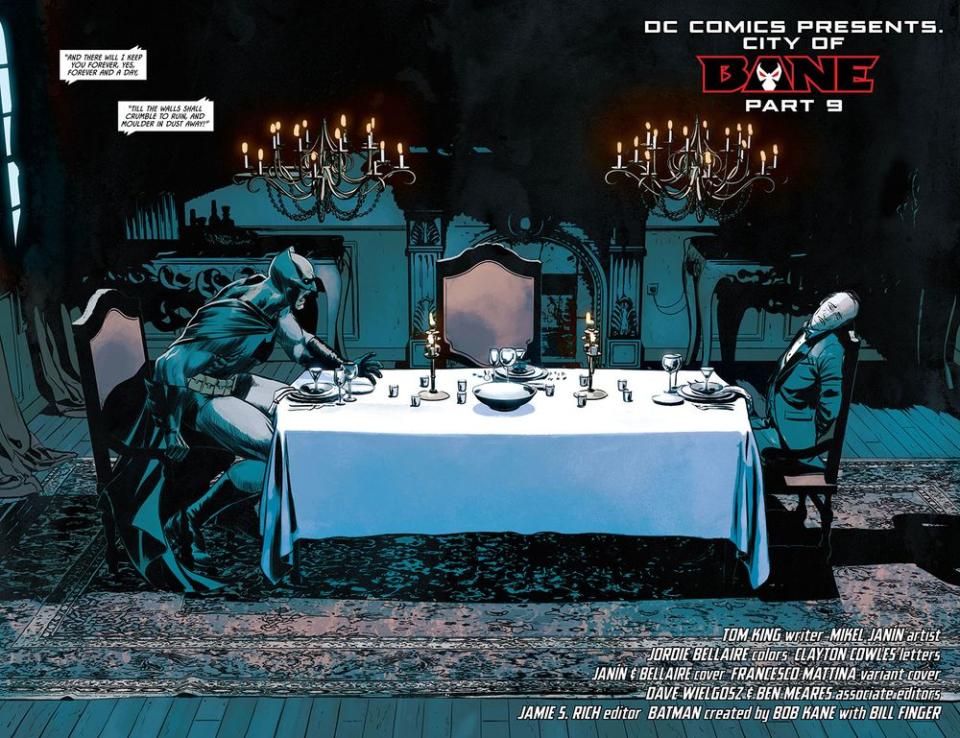
Did you view bringing Bruce to a place where he could handle death like the rest of us do as a way to humanize him or make him more relatable, for lack of a better word?
That’s the central conflict of these last two issues, of his father being like, “I know you, Bruce. I know you’re going to be like me. When Alfred died, it broke me. This is going to break you. This is going to remake you,” and thinking that Bruce is going to react in a childish way. It goes back to Alan Moore’s famous book [Writing for Comics]. He said, Bruce was the first second-dimensional comic book character. There’s sort of the first-dimensional comic book characters like Superman who have one motivation: “Save the world.” Bruce Wayne is a second-dimensional character in that there’s a reason he saves the world: His parents died. That’s what Stan Lee was famous for: He made a bunch of two-dimensional characters.
What Moore said was, our responsibility is to make three-dimensional characters — characters who don’t move in one direction. They’re not motivated by one thing because life is so complicated. The reason why you do something, it has to do with how you were raised, it has to do with who you are in that moment, it has to do with just the random s— in your life. All that stuff is what makes a three-dimensional character. I feel like Flashpoint Batman looks at Batman and thinks he’s just this two-dimensional character: “You’re motivated by death. This will kill you.” Hopefully, through 85 issues, we’ve gotten to see Batman is a three-dimensional character. Because of Alfred, because of Catwoman, because of the love of the boys, he’s evolved a little bit and reacts differently. He says, “I’m not a child anymore. That’s not going to break me. I make my own choices.”
The title of the arc is “City of Bane” and Bane has been such a central figure to the comics since the first arc, and yet it all comes down to Bruce vs. Thomas. At what point did you decide that Thomas would end up being the ultimate big bad of your run?
I mean the title “City of Bane” was a little tricky feint, right? Bane is the name of the supervillain, but “bane” also means “you’re the bane of my existence.” Bane is also the feeling, the motivation of Thomas Wayne. That was supposed to be a pun and no one noticed because it turns into the city of Thomas’ bane.
If I look back at my run, I couldn’t say this until now. I wasn’t fibbing, but just because this is just such a big twist that we were sort of switching villains at the very end. In the beginning, it started out with Bane as the big bad. Honestly, I think [the switch came in] issue #50 when I decided to put Thomas Wayne in there [on the final page]. Originally, I felt like it would be a Darth Vader-Emperor relationship where Thomas would be Bane’s top fighter but also the guy who could be better than him. But then as I explored it more, I realized, “Oh no, this is a story about Thomas Wayne.” That [switch] happened around issue # 50 when it sort of came together for me, like this is where it should go. What was going on was so complicated and I was like, “It feels like Batman is almost fighting himself” and then I was like, “Oh wait…”
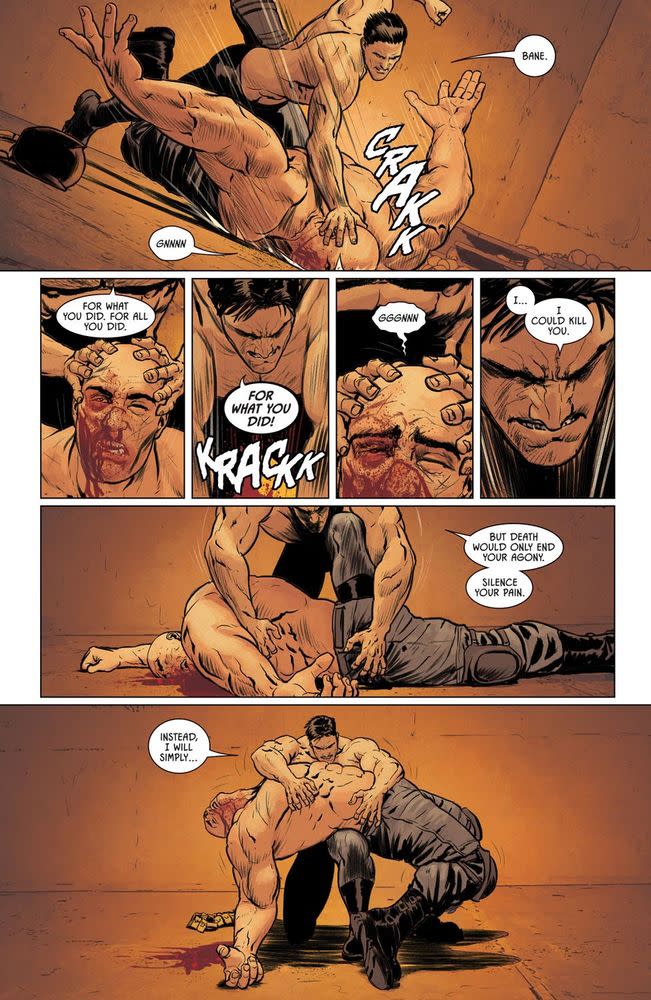
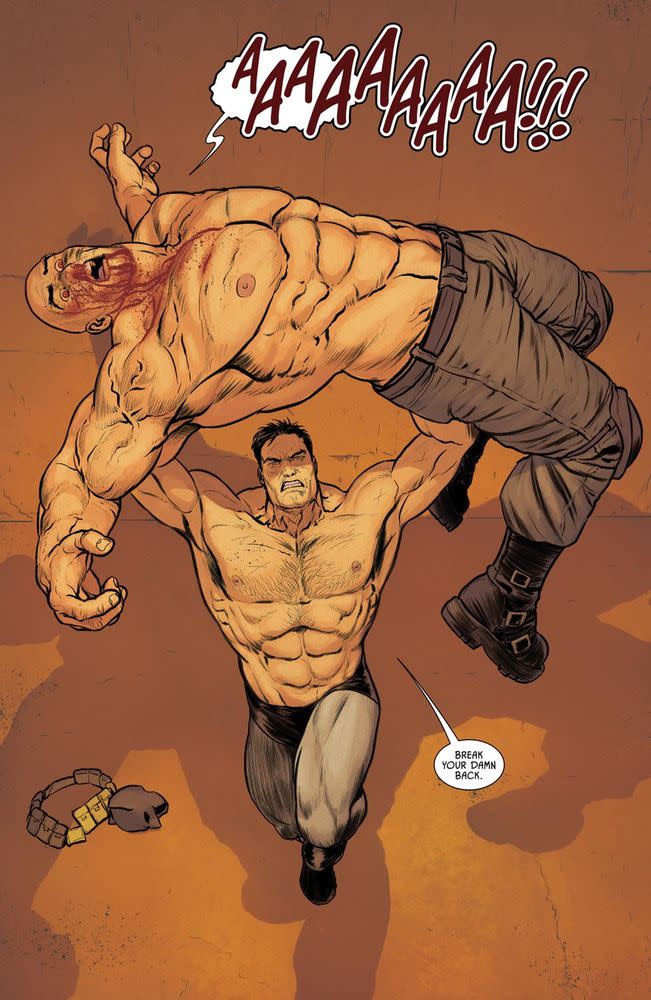

You told us the run would end with a scene with Kite Man in a bar. You even mentioned that Gotham quarterback Campbell would have a role. What made that the right way to end the story in your mind?
I stuck to it! I’m a big Charles Schulz fan. In my opinion, when it comes to comics in terms of putting pictures and words together and making a story, he’s the best who’s ever done it. He’s the Michael Jordan of comics, or the Michelangelo. No one’s done it better, he’s a god among men to me. Kite Man has always stood in for this Charlie Brown conversation. At the very end, they’re literally talking about a football game and how he’s always trying to kick the football and falling. Because of course Kite Man’s name is Chuck Brown. So to me, it was a conversation with that existential dread of Peanuts comics I was raised with. That’s what a lot of comics are about: There is no progress. But Batman throws back to him that there can be progress. It’s this endless dialectic between storytellers. It’s the idea: Will Chris Campbell finally reveal himself as a football player? And then you do The Sopranos cut to black, and I let the audience decide if there’s progress.
We talked previously about Gotham Girl and her big role in “City of Bane,” and how she shares a name with your daughter, Claire. She gets a very positive resolution here! Can you talk about that and how you’ve grown to love this character?
It’s positive in one aspect, and negative in the other. It’s so positive I’m not sure anyone’s gonna write her again. I took away all her angst and sadness that writers are attracted to. I honestly hesitated because I was like, “Oh I’m just making her into this boring happy character.” But Gotham Girl’s in Batman #1, and she ends the run. After 85 issues, I wanted to do a little tribute to my daughter. She was 5 when it started and she’s 9 now. Of all my children she’s the one who every day at the dinner table would ask, “What did you work on today, Daddy?” She came up with the story for Batman Annual #1. Clay Mann gave me this beautiful splash from Batman #24 that’s homaged in this issue. Clay gave it to my daughter, she’s got it hanging above her wall. I gave her a happy ending so my daughter could get a happy ending. But she’s definitely a much less interesting character now that she doesn’t die a little bit every time she uses her powers.
You’re not done with Batman yet, or Catwoman. You have Batman/Catwoman miniseries coming up in the new year. From what we know so far, it’s going to bring in Mask of the Phantasm. What’s the pressure like bringing this iconic character into comics?
It’s fair to say that on some level I am kind of done with Batman. The Batman that will exist now will be James’ Batman, not mine. If you want good Batman, read James Tynion and Tony Daniel, because it’s gonna be awesome. That’s where the story goes. What I have to say about the characters, I’ve said it. If you read this 85-issue story and never pick up Batman/Catwoman, you’ll still get my version of Batman. That said, Batman/Catwoman’s gonna be the best book ever! It’s my chance to do a Dark Knight Returns, something that completely stands on its own, a complete testament to who these characters are that defines or redefines them for generations, and is done with complete freedom. I’m working with the best artist in comics, Clay Mann. I’m literally writing it now, I’m writing issue 4. It’s the most fun I’ve ever had writing. Between this and Strange Adventures, I’m moving into a new phase of my career where I’m going more ambitious than I’ve gone before. I set up a bunch of rules for myself, and now I’m trying to break those rules and be even more artsy-fartsy than I’ve been. I’m trying to make great comics and do for someone else what Charles Schulz did for me.
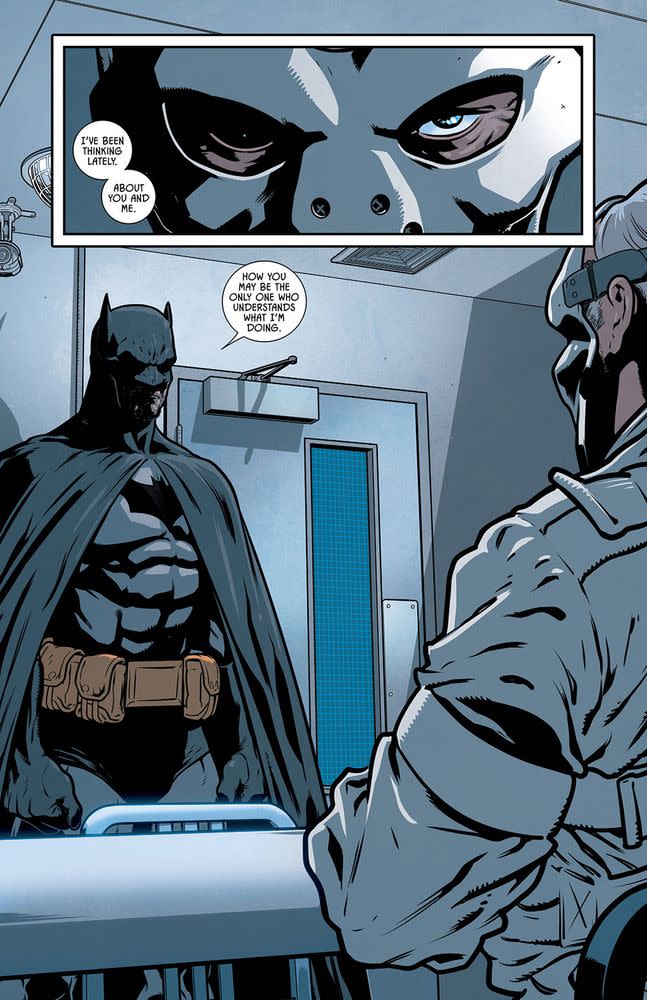
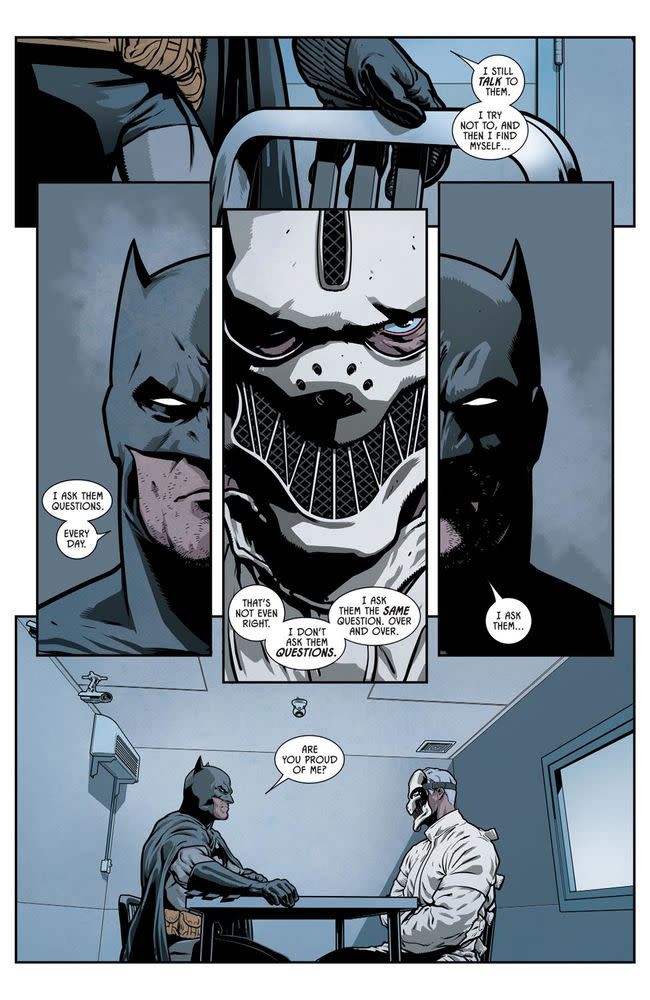
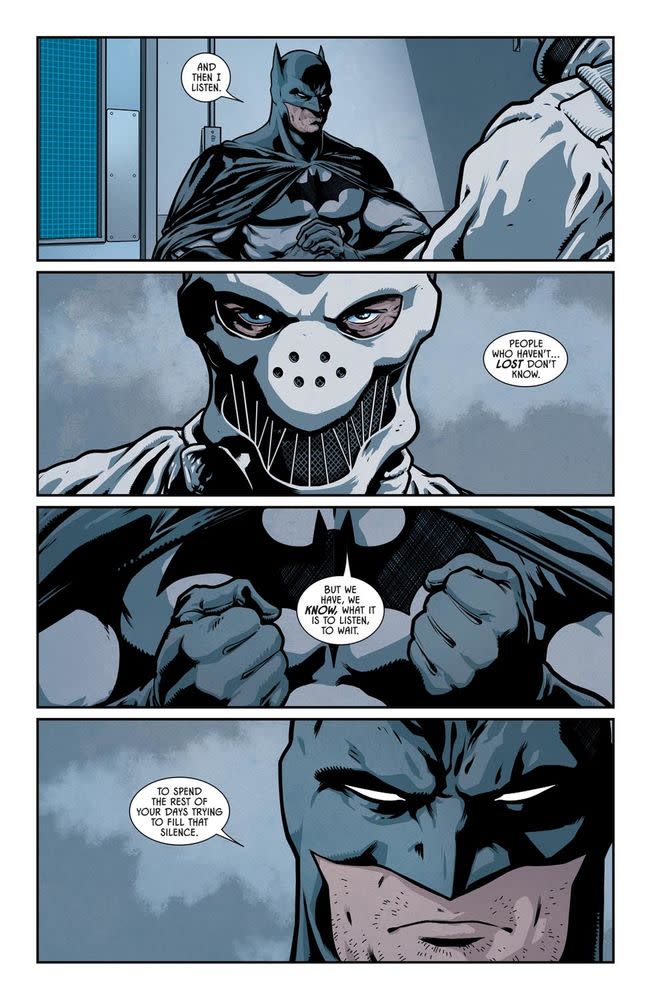
Your Batman run was originally planned for 100 issues, and then it got shortened to 85 and Batman/Catwoman was announced. It was unclear for a time whether Batman/Catwoman was the story from those other 15 planned issues just moved over or if it would be something fundamentally different, and it sounds like it’s closer to “fundamentally different.”
The original plan was to reach the end of the conflict part of the arc around the mid-80s, and then do issues of more villain-of-the-month stuff, which I never got much to do much in Batman. And it would be Batman and Catwoman together, falling back in love. That was the original plan, to do that with all the artists I’ve worked with before. Two issues with Joelle [Jones], two issue with Mikel [Janin], two issues with Clay, two issues with Mitch [Gerads], two issues with David [Finch]. When things got cut short for a number of reasons, not least that I now have to write this New Gods movie, it sort of got moved over here. Then Clay and I started talking and realized it was no longer villain-of-the-month, but it’s still about this fundamental relationship. I feel like the final beats of what would’ve been issue #100 are in #85, those pages of Batman and Catwoman. That’s the conversation they would’ve had.
Now that the run is finished and we can look at everything in the rearview mirror, is there anything else you wanted to touch on? Anything else you’re proud of?
One silly thing is if you read #85 closely, there’s a bajillion easter eggs in it. I think every single arc of Batman, from #1-85, is referenced except for four issues which were cut out for editorial reasons. We don’t mention Matthew, this bad guy I made up for two issues, and we don’t mention the Joelle issues, but everything besides those. Like if you look closely at the grave of Alfred, you’ll see there’s a quote there, and that’s a quote from the Shakespeare poem Penguin was reading in his arc, back in #57. I put in little things like that for people who want to have fun with it. That Kryptonite that Gotham Girl gets is from the Secret Files issue. Looking back over the last four or five years, looking back at these three things I created (Batman, Mister Miracle, Heroes in Crisis) I think together they form this trilogy of trauma about this nervous breakdown I had at the beginning of my Batman run. My grandmother had just died and our president had just been elected. It was about surviving that, not the way my father’s generation did (grow a ponytail, get a Corvette, run away from your family) but you can survive it by embracing your family and your values, whoever constitutes that family. Now I think okay, I’ve said enough about sad middle-aged men looking out the window, and it’s time to move on.
Related content:

